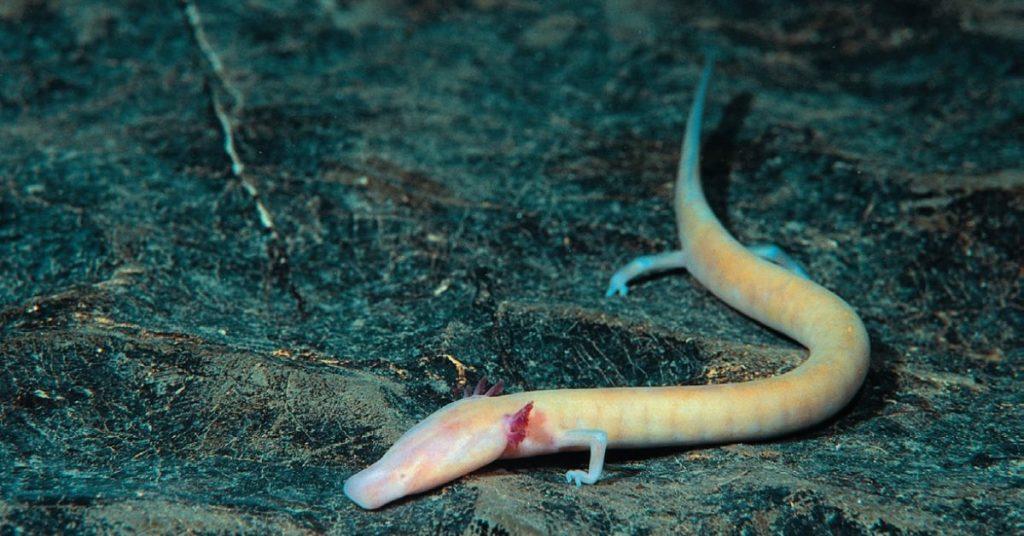FlipFact of the Day: Were it not for its tiny legs, it would have been easy to mistake the olm (Proteus anguinus) for a snake or a worm. This strange, pale amphibian is one of Europe’s most unique animals: It’s the only exclusively cave-dwelling chordate found on the continent. Oh, and it can also live up to ten years without taking a single bite of food.
On average, olms measure 20-30 cm (8-12 in) in length. These cave salamanders are entirely aquatic, and have thrived in the caves of Slovenia and Croatia over the last 110 million years. Olms are known to live beyond a hundred years, and possess keen senses of smell, hearing, taste, and electrosensitivity—the perfect tools for surviving and hunting prey in pitch-black environments. Even though they can’t see, their skin-covered eyes are still light-sensitive.
Due to the color of their skin, Europeans call olms “human fish.” (A subpopulation of darker-skinned olms also exists; these “black olms” are recognized as a different subspecies.)
Olms feed on a variety of small crustaceans and insects, depending on the kind of food that’s available to them. As food in caves tends to be scarce, olms have developed a long-term resistance to starvation. They have the ability to drastically reduce their activity and metabolic rate, in order to consume as little energy as possible. They can also eat large quantities of food and stockpile the nutrients as lipids and glycogen in the liver—or, when push comes to shove, reabsorb their own tissues.
In a 2020 study, researchers studying olms in Herzegovinian caves observed that the amphibians don’t really move around that much. One remarkably lethargic specimen apparently didn’t move from its position in over seven years! Furthermore, aside from hunting for food, the only thing that seems to motivate them to move is… mating, which only happens for them once every 12 and a half years. (Well, at least they know their priorities.)
Still remember your 5th-grade science classes? Test your knowledge and see if you still remember these facts and fundamental concepts in human anatomy, biology, botany, and other branches of science. Click here to try the “Are You Smarter Than A Pinoy Fifth-Grader” Challenge.
Follow the hashtag #FlipFacts on Facebook and Instagram to get your daily dose of science trivia!
Cover: Ciril Mlinar Cic/Slovenian Museum of Natural History
References
- Weber A. (2000). Fish and amphibia. In: Culver D.C. et al. (ed.): Ecosystems of the world: Subterranean Ecosystems, pp. 109–132. Amsterdam: Elsevier
- http://www.edgeofexistence.org/species/olm/#overview
- https://www.independent.co.uk/news/science/salamander-not-move-lazy-olm-proteus-european-cave-lifespan-a9314951.html
- https://www.ncbi.nlm.nih.gov/pmc/articles/PMC3030882/
- https://zslpublications.onlinelibrary.wiley.com/doi/full/10.1111/jzo.12760
Author: Mikael Angelo Francisco
Bitten by the science writing bug, Mikael has years of writing and editorial experience under his belt. As the editor-in-chief of FlipScience, Mikael has sworn to help make science more fun and interesting for geeky readers and casual audiences alike.







